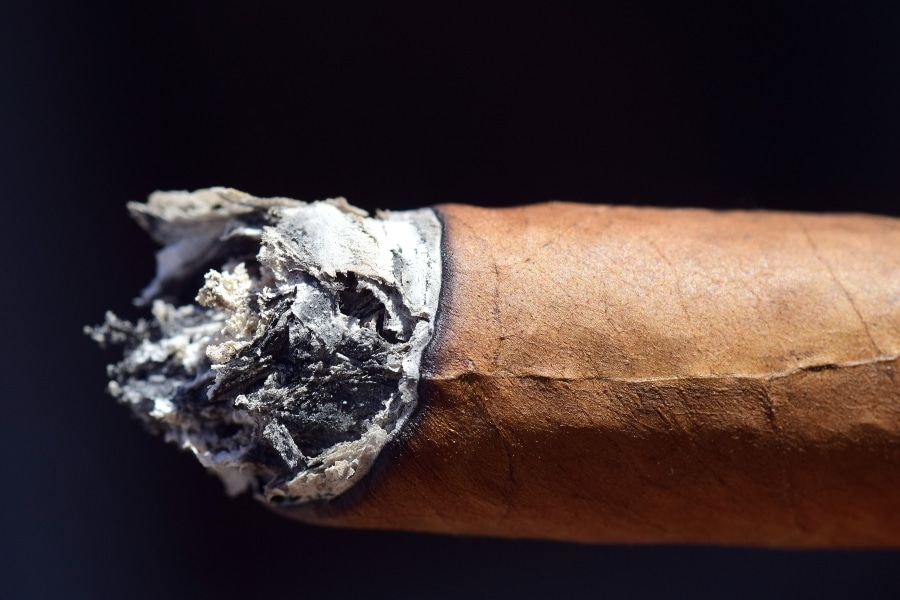
Welcome to a world where necessity breeds invention, particularly when it comes to enjoying your favorite herbs in the absence of traditional rolling papers. Whether you’re caught without your usual supplies or you’re simply curious about alternative methods, we created this guide to illuminate the various pathways to a satisfying smoke, without resorting to conventional rolling papers.
Here, we delve into the creativity and resourcefulness that cannabis culture has long celebrated, offering you practical, albeit unconventional, solutions for those moments of need.
Disclosure: Read This First!
Before we explore the myriad of alternatives to rolling papers, it’s crucial to address the paramount importance of safety and health. It’s widely acknowledged that joint papers, cigarette papers, dried hemp or marijuana leaves, and cigar papers are the only materials specifically designed and deemed “safe” for smoking, likely devoid of additional chemicals that could pose serious health risks.
These items are manufactured with the smoker’s health in mind, ensuring minimal exposure to harmful substances. Thus, while we venture into the realm of alternatives, this exploration comes with a strong advocacy for sticking to the aforementioned materials whenever possible.
The suggestions provided herein are intended for informational purposes, underpinned by a commitment to safety and informed choices. Engaging with any alternative method should be approached with caution, bearing in mind the potential risks associated with inhaling combustible materials not explicitly intended for such use.
5 Safe Alternatives to Traditional Rolling Papers
In the pursuit of enjoying your preferred smoke without traditional rolling papers, there are several safe alternatives that closely mimic or even enhance the experience, while ensuring minimal exposure to harmful substances. These alternatives are not only innovative but also adhere to the general safety guidelines for smoking materials. Here are some of the safest options:
1. Cigarette Paper
Cigarette papers are specifically designed for smoking, making them a reliable alternative to joint papers. They’re typically made from similar materials and offer a comparable burn rate and flavor neutrality.


2. Blunt or Cigar Paper
Originally intended to encase tobacco in cigars or blunts, these papers are thicker and offer a different smoking experience. They’re made from tobacco leaves, providing a slower burn rate.
3. Dried Hemp Leaf
For a pure and natural experience, rolling with dried hemp or marijuana leaves is an excellent choice. This method embraces the essence of the plant, using its leaves to create a biodegradable and chemical-free rolling material.


4. Dried Rose Petals
Using dried rose petals is a creative and aromatic alternative. This method involves drying the petals before rolling them into a cohesive paper substitute. It’s a natural, chemical-free option that adds a floral hint to your smoke.
5. Dried Palm Leaf
Palm leaves, when dried, can serve as a sturdy and natural rolling material. This method is often used in tropical regions where these leaves are readily available. They provide a slow burn and a neutral flavor.

5 Safe Non-Paper Alternatives
When traditional or even unconventional rolling materials are out of reach, the ingenuity of smokers shines through with non-paper alternatives. These methods not only offer a solution in a bind but also introduce new dimensions to your smoking experience. Here are some inventive and safe non-paper alternatives:
1. Corn Husk
Corn husks, commonly used in culinary traditions for wrapping foods, serve as an excellent natural alternative for rolling. They’re biodegradable, widely available, and add a slight sweetness to the smoke.


2. Apple
Creating a smoking device out of an apple or another dense fruit or vegetable is a classic, makeshift solution that adds a flavorful twist to your smoke.
3. Homemade Pipe
A homemade pipe can be crafted from various materials like wood, metal, or even certain durable fruits and vegetables. The key is creating a chamber for the material and a pathway for the smoke.


4. Homemade Gravity Bong
The gravity bong is known for its efficiency and the intense experience it provides. Using household items, you can construct a device that uses water pressure to pull smoke into the chamber, ready to be inhaled.
5. Traditional Glass Pipe
Last but certainly not least, the traditional glass pipe or bong remains a staple in the smoker’s arsenal. While not a DIY solution, these devices are designed for durability, safety, and a clean smoking experience.

5 Unsafe Alternatives To Avoid
Creating a comprehensive guide on alternative rolling materials means not only highlighting the safe and inventive options but also cautioning against those that might seem convenient yet pose significant risks. Let’s take a look at five alternatives that are best avoided due to health concerns and safety issues.
- Gum Wrappers: At first glance, gum wrappers might seem like a neat solution, especially those made of thin paper. However, many of these wrappers include a thin layer of aluminum foil, which can release harmful chemicals when burned. Even paper-only wrappers may be coated with chemicals to prevent sticking, which can be dangerous to inhale.
- Bible Paper: While the thin pages of a Bible or similar religious texts are often cited for their convenient size and texture, using them poses ethical concerns alongside health risks. The ink used in printing these pages can be toxic when burned and inhaled, leading to respiratory issues and other health problems. Beyond the physical health risks, there’s a level of disrespect that comes with using religious texts for such purposes, which may offend certain individuals or communities.
- Notebook Paper: Though readily available, notebook paper is designed for writing, not for smoking. It’s often treated with chemicals to improve smoothness, opacity, and other properties that make it unsuitable and unsafe for burning and inhalation. The inks and dyes used in lined or colored notebook paper can also release toxic fumes when combusted, posing a significant risk to your lungs and overall health.
- Magazine Paper: Magazine paper is particularly hazardous due to the heavy inks and glossy finishes used in its production. These materials are designed to make images pop and protect the paper from handling, not for combustion. Burning magazine paper can release a cocktail of toxic chemicals, including those used in the ink and the paper’s glossy coating.
- Plastic: The use of plastic in any form, whether as a makeshift pipe or a component of a DIY smoking device, is incredibly dangerous. When burned, plastics release a wide array of toxic chemicals, including dioxins, furans, and hydrochloric acid, all of which can have severe, immediate, and long-term health impacts.
Safety Considerations
When exploring alternatives to traditional rolling papers, prioritizing safety is paramount. The pursuit of a novel or convenient smoking experience should never compromise your health. Here are critical safety considerations to bear in mind:
- Know What You’re Smoking: Beyond the material itself, understand the substances you’re choosing to inhale. Ensure they are intended for consumption and free from harmful pesticides or additives.
- Avoid Toxic Materials: As discussed, certain materials like plastics, certain papers, and anything treated with chemicals can release toxic fumes when burned. Stick to natural, untreated materials specifically meant for smoking.
- Ventilation is Key: When smoking, especially indoors, ensure your space is well-ventilated to avoid inhaling excess smoke, which can be harmful over time.
- Homemade Devices: If crafting a smoking device, make sure all components are safe to use. Materials that can melt, emit toxic fumes, or react chemically should be avoided.
- Fire Safety: Be conscious of fire risks when using homemade devices or unconventional materials. Always have a way to extinguish a fire quickly and never leave lit materials unattended.
- Regular Health Checks: Regularly monitor your health, especially your respiratory system, if you frequently smoke. Any signs of discomfort, persistent cough, or other changes should prompt a consultation with a healthcare provider.
Final Thoughts
The exploration of alternatives to traditional rolling papers is a testament to the ingenuity and adaptability of smokers around the world. While necessity might lead to creativity, it’s crucial that safety and health always take precedence. The alternatives highlighted in this guide offer a range of options, from natural materials like corn husks and rose petals to inventive solutions like homemade pipes and gravity bongs.
However, with the emphasis on alternatives comes a responsibility to make informed, health-conscious choices. The materials and methods advised against, such as using gum wrappers or magazine paper, serve as reminders of the potential risks associated with seeking convenience over safety.